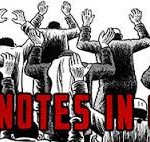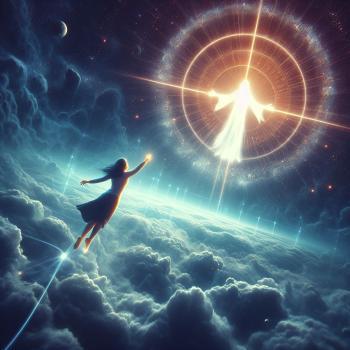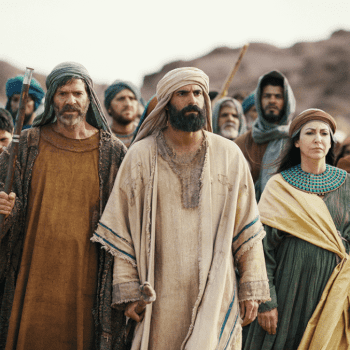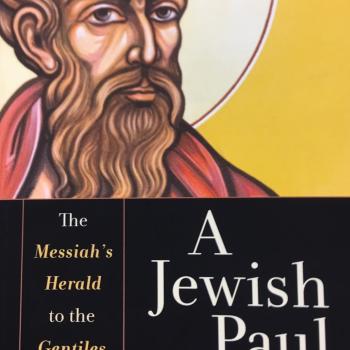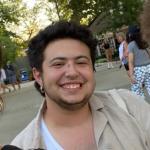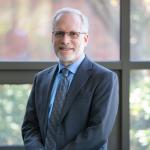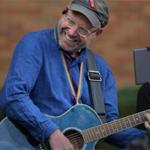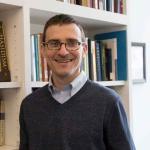When I was a boy in the 1950s attending Hebrew school in Philadelphia, once a year we received cardboard folders equipped with slots for dimes. The folders were distributed by the Jewish National Fund, a nonprofit corporation founded in 1901 by the World Zionist Organization to buy land in Palestine for Jewish settlement. On the cover was a picture of a tree being planted by handsome, tanned people dressed as farmers. When the card was full, you sent it in and in return received a certificate with your name on it and a picture of a tree planted in Israel. It was fun and it was a thrill; I was reclaiming the Jewish homeland. I saw pictures of kibbutzim (Israeli collective farms) and orange groves filling the valleys. I dreamed of going there someday.
Four decades later, I saw pictures of U.S.-made bulldozers uprooting three-hundred-year-old olive trees and Israeli soldiers restraining Palestinian villagers crying hysterically over the destruction of their groves. I traveled to the West Bank—Israeli-occupied Palestinian land—and saw the hillsides denuded of trees to build Jewish-only settlement cities. I witnessed Israel’s separation wall snaking through the West Bank on land taken in violation of international law; the humiliating checkpoints restricting Palestinian movement; the network of highways (for Jewish use only) connecting the Jewish-only towns; the vicious acts of ideological Jewish settlers destroying Palestinian orchards and physically assaulting farmers, housewives, and schoolchildren; and the poisonous impact of militarization and ongoing conflict on Israeli society. I realized that a humanitarian crime was being committed, and that the role of colonizer was leading Israel toward political disaster and the Jewish people down a road of spiritual peril.
I was born into the safe, prosperous context of mid-twentieth-century Jewish America. I swam in the deep, protecting waters of an old and majestic tradition. My early life was enriched by beautiful rituals, splendid holidays, and a rich literary and scholarly tradition. But this upbringing had another side, and it was one with which I grew increasingly uncomfortable as I began to step out of my insular Jewish world as an adult. It was a paradox: growing up in the open, if rather bland and racially segregated culture of eastern metropolitan America in the 1950s, I never experienced anti-Semitism—but then, I never ventured very far into what I had learned to call the “non-Jewish world.” The “dark side” of growing up Jewish was that I was taught to avoid and to fear the “goyim”—as my grandmother, born in Europe, and even my own American- born parents called the society surrounding the Jewish bubble in which we lived. From the Old Testament Hebrew, goyim means simply “the nations –” those non-Jewish “others.” But throughout the centuries, and right into mid-twentieth century America, the word had taken on a darker meaning. Although it was not always made explicit, one fact about the goyim was made clear to me: they were dangerous. I was taught that, among this vast sea of others who surrounded us, I had two enemies in particular: the Germans, because of what they had done to us, and the “Arabs,” as we called them, because of what they would do to us if we didn’t have Israel.
Having come into the world only three years after the end of World War II, and in the same year as the establishment of the State of Israel, I was raised in a potent combination of Rabbinic Judaism and political Zionism. I was taught that a miracle, born of heroism and bravery, had blessed my generation. The State of Israel was not a mere historical event; it was redemption from millennia of marginalization, demonization, and murderous violence. The legacy of this history was a collective identity of brittle superiority: we were special for having survived, despite the effort, “in every generation” (so reads the prayer we recite every Passover) to eradicate us. In order to survive in this hostile, murderous world, we had to remain ever vigilant, mistrustful, and—in a not always obvious but nevertheless profound way—apart. Whether justified on a biblical basis by religious Jews or, as the Zionist founders of Israel claimed, simply by virtue of our history of suffering, the State of Israel existed to ensure our safety and to underscore our unique identity in a world that could never be trusted. So I treasured the miracle of the new State of Israel. It represented the end of our history of insecurity and suffering — a solution, at last, to our eternal vulnerability. My religious faith was completely bound up with this new political reality. Was not God surely at work here, fulfilling the promises made so long ago? In the words of our daily liturgy, the State of Israel was “the first flowering of our redemption.” The story of the birth and survival of the young state spoke of our legacy of separateness and vulnerability, but also of our specialness. I embraced this legacy, I accepted this identity.
This all changed for me when I encountered the shocking reality of what Israel was doing. The journey that has ensued — political, theological, and intensely personal — has rewarded me beyond words. It is my wish to share it with you in this blog.
A word on the title of the blog, “The Politics of Hope.” The sad reality of the “peace process” that was supposed to have brought about “two states living side by side in peace and security” is that it has instead served Israel’s ongoing and relentless colonization of what remained of Palestine after the expulsion in 1948 of three quarters of a million indigenous Palestinians in what I had learned to call Israel’s “War of Liberation.” I titled my very first blog posting in 2010 “The Politics of Despair,” referring to a column by New York Times columnist Roger Cohen that urged us to settle for a political solution that accepts the status quo of gross injustice for the Palestinian people and that consigns the citizens of Israel to a future of conflict and fear. It is becoming increasingly clear that the world will not accept this reality, any more than it was able to accept Apartheid in South Africa. This blog recounts my journey as a Jew confronted with the tragic reality of what the Zionist project has brought about. It’s a journey that has brought me to churches and denominational and ecumenical gatherings in the U.S., Europe, Asia and Africa, in the company of Jews, Christians, Muslims and people who claim no faith affiliation, all united in a commitment to human rights.
Stepping into the Palestinian issue, we enter a realm in which politics and faith meet, and where the hope for and commitment to a better world that is at the heart of our faith traditions finds expression in a rapidly expanding global movement. Led by the churches, in response to a call from Palestinian civil society and a powerful theological document from the churches of Palestine, this grassroots movement represents our best hope for the liberation of Palestinians and Israelis alike from one of the most longstanding and systematic violations of human rights in the world today.
As I send off this first posting for Patheos, I am in Stuttgart, Germany, attending the Kirchentag, the biennial ecumenical assembly of the German churches. I am sharing the podium with Palestinian and German theologians, German-Jewish activists, and clergy (including Bishops!) in a session calling on the German church to stand for justice for the Palestinian people. You guessed it – this is a very sensitive and controversial issue here in Germany, pitting the institutional church against grassroots members calling for a change in the official policy of the German Protestant church that rejects any action that might be perceived as anti-Semitic (more on that in the next posting: is criticism of Israel anti-Semitic?). In my postings over the next two weeks I will share reflections from the Stuttgart meeting and my travels in Germany, drawing parallels to our experience in the United States. The parallels are strong, with powerful lessons for American society and for our own religious establishments confronting very similar challenges. One lesson I continue to learn is how much this struggle, as all human rights struggles, happens in a global framework. As Americans, this is a particularly important lesson for us to learn, and an issue I will return to repeatedly.
I am pleased to be part of Patheos and welcome you to join me in conversation, fellowship, and commitment to reflection and learning!


